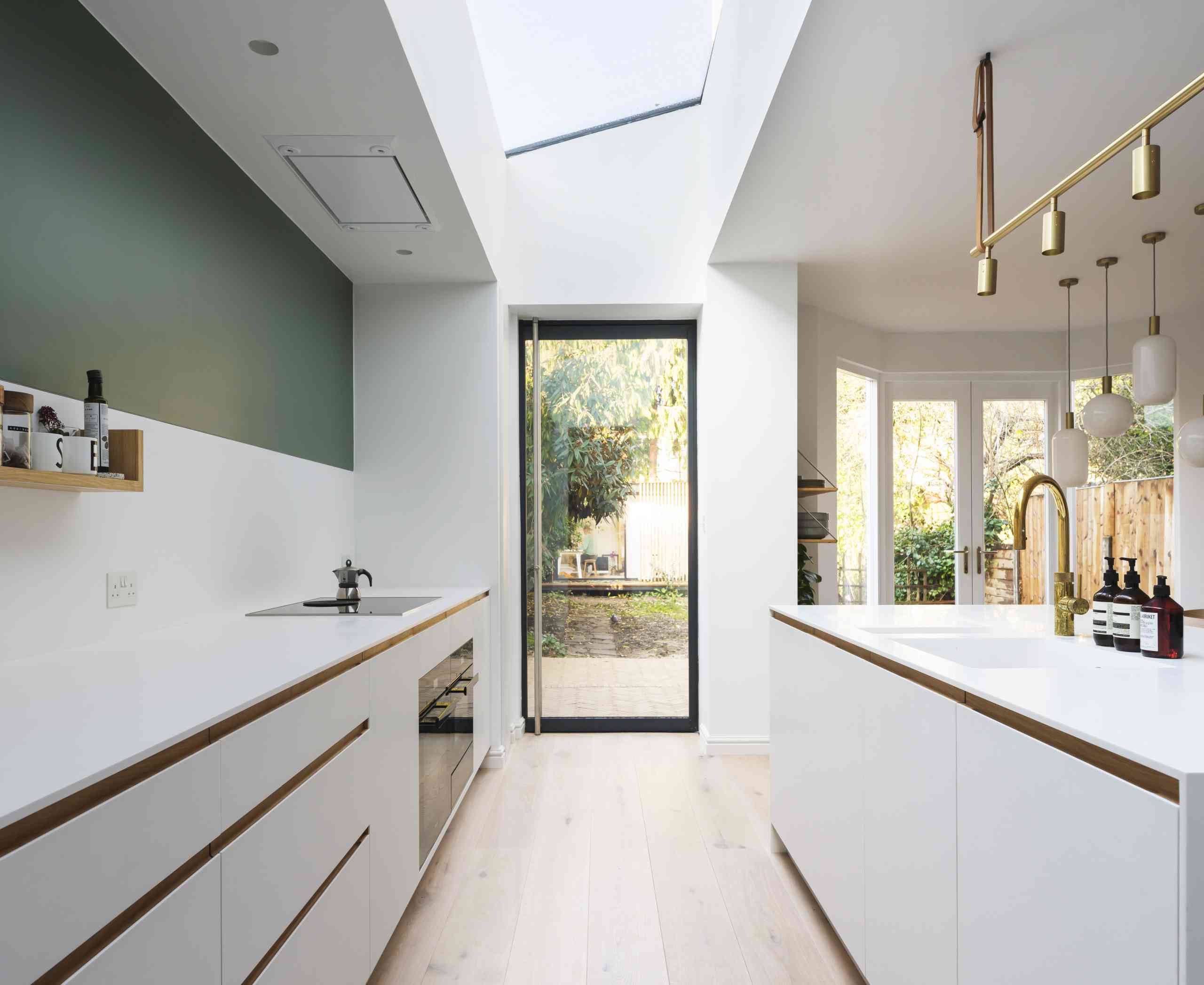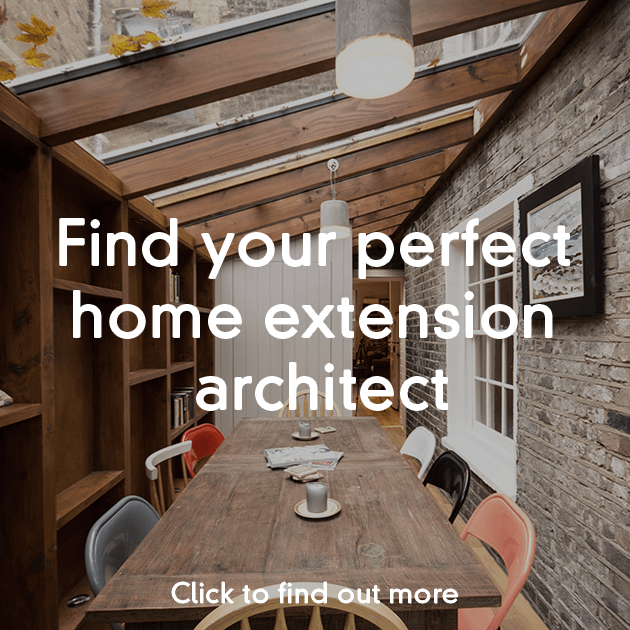To design the best house extension layout, it should not be seen as a stand-alone project. To make the most of this extra space, you and your architect should consider the best layout for the entire house. But don’t worry – this doesn’t mean you will need to rethink the entire existing layout!
Working within your budget, your architect will explore how to maximise the potential of your home in a holistic way.
Extension pictured above by Anthony, architect in Bristol. See his full profile on Design for Me and shortlist him for your extension project here.
Finding the right balance between accommodation
Adding an extension often results in more kitchen/living space. For some houses, this addresses an existing imbalance in the home, e.g. the living space was too small for the number of occupants. The typical areas to be balanced against one another are:
- living space
- kitchen space
- sleeping accommodation
- bathrooms
- storage
- (and more commonly) office space.
Achieving a sensible balance across your home, will also help to ensure you are maximising your home’s resale value. However, you may have particular needs that are specific to your own family and take precedence to resale value.
Circulation, circulation and circulation
Good circulation design has a knock-on effect for room layouts and also the function of the home as a whole. Usually, a house layout that looks the most simple or obvious is the best. However, it can take an architect years of training experience to perfect the discipline of good layout design to arrive at this most ‘obvious’ layout.
An architect will usually try and keep circulation floor space to a minimum, maximising the habitable space.
Circulation doesn’t necessarily mean corridor or hallway space. Open plan living allows for movement through spaces in a more flexible way. However, your architect will consider the flow of movement to get from A to B to C and in relation to furniture layouts and functional connections between certain uses, e.g.
- kitchen – dining space
- bathroom – bedrooms
- playroom – living space
- living space – garden.
Furniture
It’s helpful to decide early on which furniture you would like to keep and which you will replace at an early stage of design development. This should be measured and drawn on the layouts early in the design process.
Connections
Modernist architect Le Corbusier described the home as a ‘machine for living in’. It should serve its occupants, supporting domestic life, making us more productive, healthier and happier. Having good sight-lines around the house – where family members feel connected in their activities – can encourage good communication and unity.
Think about which domestic processes and activities that happen in your household. For example:
- Washing and drying clothes – how could this process be made easier?
- Coats and shoes – how can they be easily tidied away and be accessible?
- Pets – where will they eat and sleep? What’s the best way of washing them?
- Bikes and recreational equipment – where’s the best, most accessible place to store them?
Light and views
Ideally every room will have the advantage of natural light. However, for many homes, particularly terraced houses, this isn’t possible. Adding an extension also adds more depth to the floor plan, meaning the middle of the plan will be darker.
One of the first principles of good layout design is to prioritise light and views.
No need for light – storage
Less need for light – utility rooms, secondary bathrooms/ensuites/WC
Natural light ideal – main bathroom
Natural light essential – kitchen / dining (essential), living space (essential), Bedrooms (essential)
Do you need an architect?
In another popular article, we asked, Do I need an architect for an extension?
Surprisingly, you may think, our answer was ‘not necessarily’. HOWEVER, I definitely wouldn’t recommend skipping the design/drawing phase of the project completely. It may be that you engage an architect or architectural designer for the design phase only, and/or use a design and build contractor. A good design professional can help you find the best solution for your brief; they will advise you on where to spend your budget and where to save. Some will be able to guide you through planning, building regs, freeholder consent and party wall issues. They can even help you appoint a builder, get the right price and, if required, oversee the builder’s work.
We have 100s of architects, interior designers and garden designers, who we’ll quickly match to your requirements and see who’s interested. You can choose up to three interested design professionals for an initial consultation. And it’s all completely free!
- Quickly see who’s interested in your job.
- Create a shortlist.
- Invite up to three for a no-obligation consultation.
Emily Design for Me

